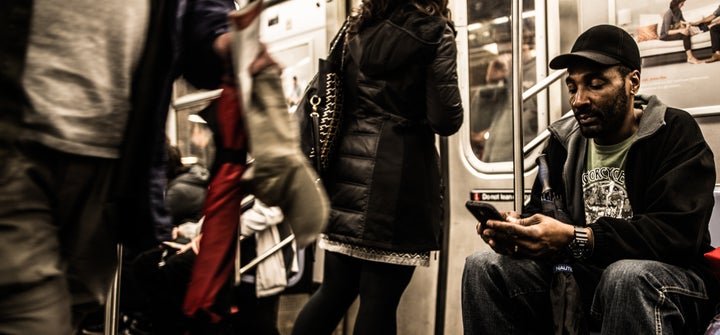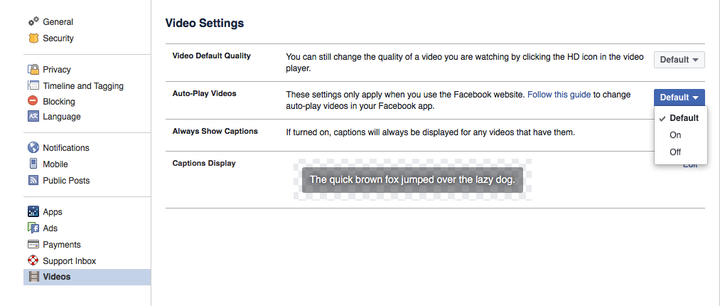
On July 5th, 2016, Rashain Carriere-Williams woke up to the news that Alton Sterling, a father-of-five, was fatally shot in the back by police officers outside a convenience store in Baton Rouge, Louisiana. Carriere-Williams, who lives only 81.1 miles away in New Orleans with her husband and six-year-old twins, opened Facebook and witnessed the Sterling shooting. Over and over again. Facebook friends and pages she followed posted the video, so as Carriere-Williams scrolled her newsfeed, each video posted automatically played. Default Facebook video feed settings automatically play video footage in a user’s newsfeed as he/she scrolls in either direction. Meaning, the video will play whenever it’s in the user’s view. It pauses when the user scrolls past it and picks up where it left off when back in view (it doesn’t matter if the user is scrolling down or up). Two days later, Carriere-Williams had the same experience but with Facebook Live and video of officer Jeronimo Yanez fatally shooting Philando Castile. The officer was charged with manslaughter in November 2016 and there is an ongoing federal investigation into the Sterling case.
Violence in the news isn’t new, says Carriere-Williams, New Orleans’ Boys Town senior director of program operations, but this format had a starkly different affect on her. She vividly remembers not being mentally prepared for the images that she saw. Between social media and the news replaying the video images of the shootings, she felt that it was adversely impacting her mental health.
I was depressed and very anxious. At that time, I had to completely disconnect from both social media and television news. When I returned to social media, I disabled the automatic feature and when I do watch graphic videos, it is after I mentally prepare myself to watch them.
Carriere-Williams said the frequent automatic viewing of the shootings heightened her concern and placed her on high alert. She says the graphic images made her fearful to the point where she thought she may seek out professional counseling to sort out her feelings and vicarious trauma. In the end, disabling the automatic video feed and simply taking a break from Facebook, and television, helped. “Most times I just choose not to watch,” says Carriere-Williams. “And that has helped.”
More than 1.79 billion people are monthly active Facebook users. More and more, it’s where people obtain their news and learn about traumatic events. Yet, when people upload and share these videos, they stream automatically on people’s newsfeeds without warning about the graphic content. The result is that some people experience the clinical symptoms of Post-Traumatic Stress Disorder (PTSD), such as mood changes, sleep disturbance, flashbacks, and avoidance more than a month after watching the traumatic event.
It may be surprising that a person who watches a traumatic event on video can share similar symptoms to a person who actually experiences or firsthand witnesses a traumatic event such as combat, a natural disaster, a car accident, or sexual assault, but a study by the University of Bradford, England suggests that a person doesn’t have to experience an event firsthand to experience trauma. Dr. Pam Ramsden presented the study’s findings at the May 2015 Annual Conference of the British Psychology Society, held in Liverpool, where she shared that more than one fifth of the 189 people surveyed scored high on clinical PTSD measures from seeing images on social media. Participants completed a vicarious trauma assessment, a clinical assessment for PTSD, and a questionnaire on violent news events on social media or the Internet—including the 9/11 terrorist attack on the World Trade Center, school shootings, and suicide bombings.
Twenty-two percent of participants were significantly affected by the media events. They scored high on clinical PTSD measures even though none had previous trauma nor were they present at the traumatic event—they had solely watched them through social media. The participants who reported they viewed the event more often were most affected. “It is quite worrying that nearly a quarter of those who viewed the images scored high on clinical measures of PTSD,” says Ramsden.
There was also an increased risk for those with outgoing, extroverted personalities. With increased access to social media and the Internet via tablets and smartphones, we need to ensure that people are aware of the risks of viewing these images and that appropriate support is available for those who need it.
Ramsden says that vicariously experiencing traumatic event on social media may impact our day-to-day lives. Unlike traditional news outlets, she says, social media enables unedited, graphically violent, and horrifically detailed images. Traditional news publications generally issue warnings about graphic and upsetting content. That’s not often the case with social media.
Facebook likely never set out to be a commonly used news format, but that doesn’t matter, say experts—it is and that comes with a responsibility to consumers. Allison Brauer, MSW, LMSW, says Facebook should include graphic content warnings and should make it clear (perhaps as a prompt on all videos) how users can change default settings. She also states that the default video setting should not automatically play videos, unless the user specifically selects autoplay. Facebook users range from 13 to 65-plus years old and have varying levels of Internet knowledge. Meaning, says Brauer, they may not even realize that they can change video feed settings. “People having difficulty adjusting their settings should research or ask a friend/family member how to make the necessary changes to their profile,” says Brauer. “It may also be a good idea to unfollow and/or unlike groups and individuals that continuously post graphic material.”
Brauer doesn’t let individuals who post graphic material off the hook. They too, she says, need to be mindful regarding content and the impact it may have on viewers.
Carol Hudgins-Mitchell, Certified Trauma Specialist, M.Ed., LSW, NBCCH, says warnings on social media are critical because they give viewers choice and allow them time to prepare for what they are about to see. She says that without preparation, explicit violence may adversely impact people’s brains and bodies. Hudgins-Mitchell highlights that the human brain has a built-in smoke alarm to detect danger. She says the amygdala subconsciously alerts people to threats. “Everything we experience is instantaneously previewed by the amygdala for our survival,” says Hudgins-Mitchell. “We may read graphic images of violence as a threat, which leads to heightened anxiety and stress.”
An adequate warning of video content, such as letting viewers know that portions of a clip are graphic in nature—and changing default setting for videos so they do not automatically play—allows the viewer choice. In order to watch, all the person has to do is press the play button, but the difference between choice and the absence of is significant—particularly for an individual who is stressed, has an outgoing, extroverted personality (Dr. Pam Ramsden pointed out that extroverts were particularly at risk), or is a trauma survivor. Hudgins-Mitchell says she witnessed a similar vicarious response with her clients in the wake of 9/11. Adult clients who had experienced trauma had a particularly strong response to the tragedy. “They had been doing fairly well, but after 9/11 they experienced nightmares, anxiety, and a sense of dread,” says Hudgins-Mitchell. “They were triggered by incessant images and news of the attacks. Once they turned off their TV and news, they quickly returned to their previous level of better, healthier functioning.”
Hudgins-Mitchell says that viewing unsolicited and unexpected images of graphic violence undermines a person’s sense of psychological and, perhaps even, physical safety.
It’s not just autoplay on Facebook’s video feeds that can trigger trauma. Jenny Mosier, co-founder and Executive Director of Michael Mosier Defeat DIPG Foundation, says that each day she gets an On This Day memory pop up on her Facebook wall, she has to take pause. Her son Michael was just six years old when, one-and-half years ago, he died from terminal pediatric brain cancer DIPG (Diffuse Intrinsic Pontine Glioma). Some days she smiles because she’s reminded of an experience or moment that she has not thought of for awhile, but she also feels deep sadness when she scrolls down to see the particular year the photo was taken.
I am forced to confront that the time when Michael was here with us keeps getting further away. Remembering Michael still comes with significant heartache, though I am grateful for each time during my day when Michael is remembered—either by others or from his constant presence in my thoughts. It is the only way he can still be here with us.
When asked if she has ever thought of disabling the nostalgia feed, Mosier says no. On days that feel too hard, she simply skips past the memory and chooses not to engage.
I have never considered disabling the function altogether because it’s a valuable connection to memories of my sweet boy who I miss so much. I am grateful for the ability to look back at moments that may otherwise not be on the top of my mind.
Similar to automatic video feeds, what’s crucial for the nostalgia feed, says Hudgins-Mitchell, is that it’s a personal decision and one that individuals must be allowed to make. It’s essential that people know how to turn off automatic settings and know that they can be changed. Many people aren’t informed that this is an option; that they don’t have to be subjected to automatic videos or photos. They may opt to leave the settings as is, but at least they understand their choices and can select the one that best fits them.
Here’s how to disable Facebook’s autoplay on its video feed and On This Day nostalgia feed.
Facebook’s video feed
1. Go to settings
2. Click on video settings on left hand side
3. Under auto-play videos, select your preference

Facebook’s On This Day nostalgia feed
1. Go to https://www.facebook.com/onthisday
2. Click on notifications and select your preference

This post was originally published on the National Association of State Mental Health Program Directors (NASMHPD) website.
If you or someone you know needs help, call 1-800-273-8255 for theNational
Suicide Prevention Lifeline.You can also text HELLO to 741-741 for free,
24-hour support from theCrisis Text Line.Outside of the U.S., please
visit the International Association for Suicide Prevention for a database
of resources.
